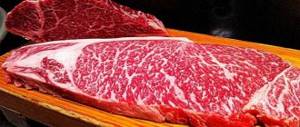To ensure that the prepared dish is not only tasty, but also healthy, it is important to use exclusively fresh ingredients. To a greater extent, this recommendation concerns meat ingredients that can cause serious poisoning. Therefore, today we will try to figure out how to understand that the chicken has gone bad.
Meat color
One of the criteria for meat spoilage is a change in its color. Fresh chicken meat is characterized by a pinkish tint, which becomes gray as the condition worsens.
If the meat has just begun to change color and a pinkish tint predominates, it should be cooked as soon as possible. If most of the product has turned grayish, you should stop using such a component in preparing the dish.
A sign of rotten meat can be not only the grayish color of the carcass, but also the appearance of yellowish spots on it. Also pay attention to the appearance of the product after it is prepared.
If you used rotten meat for these purposes, it does not change its color towards a lighter color under heat treatment conditions.
The technologist gave advice on how to recognize dangerous rotten chicken
In St. Petersburg, Public Control specialists checked the chicken meat of several companies, which they sell from store shelves. It turned out that half of the tested samples contained bacteria dangerous to health and even life. Low-quality products were identified in, "Belgrankorm - Veliky Novgorod", "PRODO Poultry Farm Kaluzhskaya", "Poultry Farm "Roskar" and "Severnaya".
Meat from the above-mentioned poultry farms showed the presence of salmonella and listeria. Experts noted that the reason for this discovery was most likely poor hygiene at work, and the birds were initially sick before slaughter. The way the product was stored and transported was also considered important - dangerous bacteria indicate that factory workers violated the temperature regime.
Doctor of Technical Sciences, Dean of the ITMO Faculty of Food Technologies Alexander Ishevsky told NEVSKY NEWS that chicken can be stored at a temperature of two to six degrees for about three days. When choosing products, you need to pay attention to the appearance.
“She should look like a chicken. No bluish color, no smudges, if there is a skin, it should be without any remaining feathers and not move away from the meat. The color should be natural: the breast should be white-gray, and the thigh should be dark. When you take the chicken, press the packaging with your finger. If something leaks from it, it means it has been over-injected to increase its weight. Freshness is checked this way: press with your finger. If the pit is restored back, the chicken is fresh. If the hole remains, then the chicken lies for a long time and successfully,” explained the technologist.
Unfortunately, you can determine the degree of freshness of frozen chicken only after you defrost it yourself. Ishevsky only added that freezing chicken is allowed once. If frozen several times, the meat will be loose. Therefore, it is always better to give preference to chilled products, the freshness of which can be checked.
As for the smell, Izhevsky adheres to the same rule: the chicken should smell like chicken, no foreign odors.
“The color is uniform, pinkish, the skin should not sag, there should be a liver and spleen inside. The skin of the chicken should not be sticky or slippery. If one of the listed options is present, it means the chicken is stale,” the specialist said.
The technologist told how chicken is given a marketable appearance. Stale goods are soaked in potassium permanganate, vinegar and even bleach - this eliminates the smell of rotten meat, but the above-mentioned flaws appear. That is, the color, consistency and, accordingly, taste change. In addition, there is a possibility of poisoning.
Earlier, the National News Service wrote that the average old-age pension next year will increase to 17.4 thousand rubles. The growth will be 6.3%. According to the draft budget of the country's Pension Fund, social pensions will increase by 2.6%, the Ministry of Labor of the Russian Federation reported.
The smell of meat
Be sure to pay attention to the smell coming from the meat. If a meat ingredient is repulsive with a sharp and unpleasant aroma, the meat is spoiled and it is better to get rid of it.
Sometimes it is not possible to recognize a spoiled meat product in time, but during cooking such an ingredient can become a source of an unpleasant aroma. In this case, it is better to stop cooking and discard the meat.
Main signs of staleness
It is very important to be able to correctly determine the degree of freshness of chicken meat. There are several signs that chicken is starting to spoil.
Let's take a closer look at each of them.
A change in the color of the meat directly indicates that rotting processes have begun. If the product is fresh, then its fillet and skin have a pronounced white-pink tint, but as the chicken spoils, it turns blue. If the pink color predominates and the grayish tint is insignificant, then you can still try to cook the meat as quickly as possible, but if more than a third of the product has changed color, all that remains is to throw it away.
Another sign of rotting that has begun will be yellowish spots on the skin.
Be sure to pay attention to changes in the shade of meat during its heat treatment - fresh chicken becomes light during cooking, and if the basic tone does not change, most likely you bought a rotten product, treated with chemicals to muffle the unpleasant odor.
Smell
This is another sure way to determine that raw meat has begun to rot. Obviously, if a product smells bad, then you should refuse to prepare it immediately. If it looks fresh, then be sure to sniff its breast - the chicken begins to rot in this place, so the smell appears first there.
Sometimes it is not possible to recognize a spoiled product in time, so you need to pay attention to its aroma during the cooking process.
Usually, during cooking and frying, it begins to emit an unpleasant odor; when it appears, cooking should be paused and the meat should be thrown away. Of course, most often fragrant spices are used during heat treatment; they drown out odors, but if you smell something like sulfur, rest assured that such a product is categorically unsuitable for consumption.
Presence of mold
An indisputable fact of spoilage of chicken meat is the appearance of spots with signs of mold.
Such formations on the product have a greenish or black tint and cause a characteristic odor, indicating decay processes. It is strictly not recommended to use such chicken in cooking.
How to understand staleness when cooking
During the cooking process, how can you tell if the chicken fillet is spoiled? Before cooking, the meat is washed and wrapped in a paper towel. If the pulp has been stained with chemical reagents, the dyes will appear on the paper in the form of colored spots within 5 minutes.
The fillet is cut with a knife, the odors are removed from the blade by immersing it in boiling water for 1 minute. You need to understand that the processes of decay begin in the depths of the muscle mass. It is more difficult to remove the odors accompanying decomposition by chemical treatment, so it is easier to detect unpleasant odors.
We recommend: Cheese poisoning
Poor-quality meat begins to smell stronger during heat treatment, so spices are added to the prepared dish after 3-5 minutes, after making sure the chicken is safe.
No ice crust
Purchasing frozen meat does not guarantee a fresh meat product. In this regard, it is strongly recommended that you carefully study the purchased product.
A freshly frozen chicken carcass is necessarily characterized by the presence of a thick ice crust, the presence of which confirms the fact that the product was frozen correctly and in compliance with all requirements.
If the presence of white ice is observed on the product, we are most likely talking about meat that has been frozen. Of course, frozen meat can be safely used in cooking, because it does not pose any danger, but in this case you need to be prepared for the fact that the taste of the final product will be slightly spoiled.
How to properly store chicken
Raw
Raw chicken meat is stored at home chilled or frozen in the refrigerator.
The shelf life of chilled chicken in the refrigerator should not exceed 3-5 days at a temperature of 2 to 6 degrees. If the temperature is reduced to 0, the permissible storage time increases to 10 days.
Do not store chilled chicken uncovered in the refrigerator. If particles of previously spoiled products get on it, the meat will become unusable faster.
It is best to pack the chicken in a container, cling film or plastic bag, from which the air must first be released.
When frozen, the shelf life of chicken increases - up to a year at temperatures from -18 to -24 degrees, but already at -5, chicken can be stored for no more than one month.
Poultry that has been stored no more than a few hours at room temperature or no more than two days chilled in the refrigerator can be frozen.
See also: How to distinguish pork from beef
Chilled chicken stored in a container will last 2 days longer than chicken packed in cling film or a plastic bag.
Ready
Cooked chicken does not last long, as it is not advisable to freeze it. At room temperature, the permissible storage time for cooked chicken does not exceed 3 hours.
In the refrigerator, fried and boiled chicken will be suitable for consumption within 48 hours, stewed - 72 hours. Prepared chicken dishes should be stored in tightly closed containers, without leaving the meat exposed.
❌ You should not store ready-made chicken dishes on a balcony or loggia during the cold season, since there, unlike a refrigerator, the appropriate air humidity is not maintained, which can lead to premature spoilage of the food product.
Duration and storage conditions of chicken meat
When purchasing chicken meat, be sure to pay attention to the expiration dates indicated on the packaging. Unfortunately, compliance with this requirement does not always guarantee the purchase of fresh meat, because the product may be stored in inappropriate conditions.
To avoid mistakes, it is recommended to familiarize yourself with the storage conditions of meat. The product must be packaged in vacuum packages and sealed containers.
Chicken must be stored at low temperatures to avoid rapid spoilage. So, chicken meat can be kept in the refrigerator for no more than two days. As for the frozen product, the maximum duration of its storage in the freezer can be up to 12 months.
When yellow is a sign of spoilage
Signs of a spoiled product
When choosing a chicken carcass, pay attention to its color. Yellow meat may indicate spoiled products.
Fresh pink chicken. If it has spoiled, the meat turns gray and becomes covered with yellow spots. During cooking, the color of the chicken will remain gray. An expired carcass smells unpleasant. The smell is very pungent and sour. This chicken should not be eaten. Heat treatment will not get rid of the odor.
Touch the chicken carcass after rinsing it under water. If there is a shiny film left on it, and your hand easily slides over the meat, it means it is spoiled. Sticky chicken is also unsuitable for consumption.
In what cases can chicken go bad?
The main reason for chicken meat spoilage is improper storage. This happens when the temperature regime is violated, repeated freezing and defrosting.
The product may deteriorate if left in direct sunlight for a long time.
Another reason is too long storage. The refrigerated product remains fresh for 5 days at a temperature of 0 to 2 °C and 15 days at 0 °C.
A thawed chicken carcass is kept in freezers for no more than a day. If you violate the deadlines, the meat products will spoil.
How to choose the right chicken in the store
It is recommended to buy a chilled carcass that has never been deep frozen. It has a more delicate taste.
The meat should be in the refrigerator in transparent packaging so that its external characteristics can be assessed. A high-quality product is pale pink, covered with a pimply skin of light pink color.
Fresh chicken has pale yellow fat. The carcass must be whole, without broken bones, scratches or blood stains.
Buy only chicken that has been completely gutted and plucked and has no unpleasant odors.
When purchasing, read the label. It should indicate the absence of chlorine. Rospotrebnadzor has introduced new requirements according to which meat can no longer be disinfected with chlorine.
More information about chicken products is described in the article “Types of chicken meat products.”
Study of the skin surface
Fresh chicken meat is smooth and elastic, so by touching the chicken you will be able to determine its freshness. To do this, simply press firmly on the carcass with your finger to form a dent. If after this the meat quickly returns to its original position and the dent disappears, then you have a fresh product.
Chicken meat that has expired is characterized by looseness, and after pressing, the formed dents do not disappear. As already noted, in addition to the friability, there will certainly be a sticky and slippery film on the surface of spoiled chicken meat.
If you observe at least one of the signs of meat spoilage, which were discussed in detail in this article, or you have doubts about the freshness of the meat, it is better to refuse to use it in cooking. Such an error can cause serious poisoning and the development of dangerous complications.
Smell and elasticity
“When choosing fillets in a store, you should pay attention to the smell and elasticity of the meat. The fillet should not smell anything unpleasant. When pressed, it should quickly return to its original shape. Color does not affect the freshness of the product. The meat may have a yellow tint. This means that the chicken was fed corn. There is also black fillet - very expensive. This variety is produced in China. In the 1990s. Blue chickens were sold in stores. Due to lack of food, they were frail, but edible. It is impossible to identify other deficiencies without laboratory tests,” says Sergei Yakovlev, chief expert on veterinary issues of the Russian Poultry Union.
| Brand | Observations identified |
| "Yaroslavl broiler" | Nutritional value differs from declared |
| "Akashevo" | chloroform |
| "Petrukha" | chloroform began to deteriorate |
| "Clear Dawns" | chloroform, nutritional value differs from declared, began to deteriorate |
| "Prioskolye" | the product began to deteriorate |
| "Alfoor" | traces of the antibiotic dinitrocarbanilide |
| "Blagoyar" | traces of the antibiotic dinitrocarbanilide |
| "Latifa" | traces of the antibiotic dinitrocarbanilide and chloroform |
| "Petelinka" | traces of the antibiotics enrofloxacin and ciprofloxacin, chloroform |
| "First freshness" | traces of antibiotics enrofloxacin and dinitrocarbanilide, chloroform, nutritional value differs from declared |
| "Mosselprom" | traces of the antibiotic enrofloxacin, began to deteriorate |
| "Troekurovo" | traces of the antibiotics enrofloxacin and ciprofloxacin, chloroform, deficiencies in labeling |
| "VkusVill" | traces of the antibiotics enrofloxacin, diclazuril and dinitrocarbanilide, chloroform, deficiencies in labeling |
| "Rococo" | traces of the antibiotics enrofloxacin and dinitrocarbanilide, shortcomings in organoleptic properties - damp, slightly sticky surface, musty odor, insufficiently dense and elastic consistency |
| "Miratorg" | traces of the antibiotic enrofloxacin, chloroform, has begun to deteriorate, deficiencies in labeling and organoleptic properties - when pressed with a finger, the resulting pit is leveled out slowly (within 1 minute), cloudy broth with an unpleasant odor |
| According to research by Roskachestvo | |











